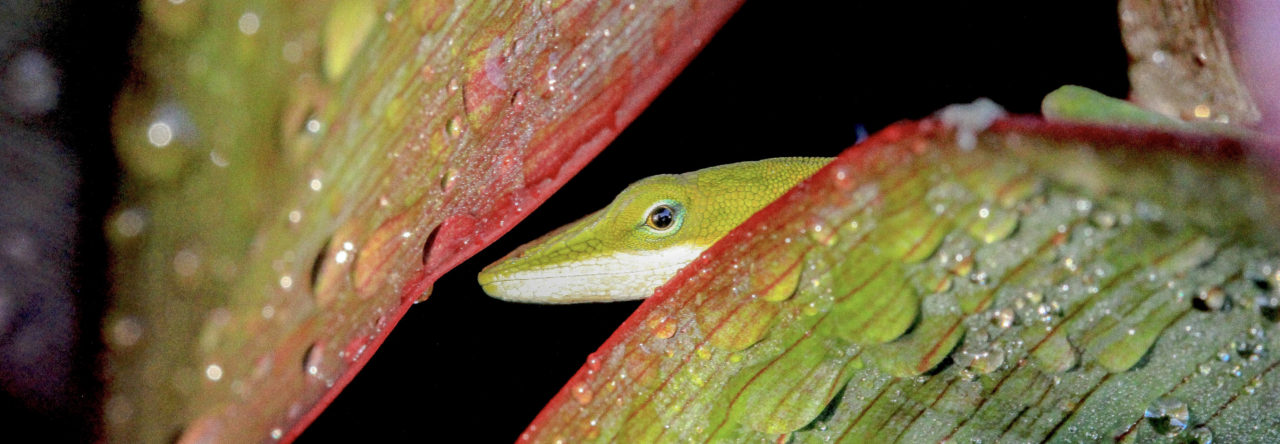During our Anolis distichus work in the DR last summer, we found one male who had a portion of his dewlap that was completely transparent!
Of course, there was a hole in his dewlap. (Sorry Manuel).
It’s fairly common to find male anoles with damaged dewlaps. Sometimes there’s a hole punched through like the individual pictured here. (Did he snag it on a thorn? Was he pecked at by a bird?) Other times, the hyoid process is broken such that the dewlap doesn’t fully extend, if it extends at all. Yet these males often successfully hold territories that include females.
A previous post on AA asked, “What’s all the fuss about dewlaps?” Link to that post to read about research that experimentally reduced or disabled the dewlap to study the consequences. These studies did not find an appreciable effect of a disabled dewlap on the outcome of male-male battles (staged in the lab) or on copulation success (measured in the field after dewlap manipulation). These results suggest, counterintuitively, that dewlaps may not play a large role in reproductive success. Before jumping to conclusions, however, it’s important to note that these studies did not manipulate individual lizards before they had established territories in the field nor did the researchers follow lizards throughout the breeding season.
It may be that the dewlap is most important during territory establishment and that once males learn their neighbors, losing dewlap function is not critical. Or, lizards that have a disabled dewlap may be drawn into fights more often leading directly to reduced body condition, injury, or death even though they may win fights in the short term. Or, while the dewlap may not be important for male-male battles, it may be more important for courtship displays. All of these are open questions. A long-term field experiment (perhaps in enclosures or on small islands) following the survival and reproductive consequences of dewlap disablement over a breeding season or even across generations could be very revealing.
- DNA Sequencing from Formalin-Preserved Specimens - December 16, 2014
- Sans the Claws, Anoles Present Under The Trees? - December 5, 2014
- Out Damned Spot! Or, How They’d Be Loving If They Weren’t Fighting - November 18, 2014



Pat Shipman
Fascinating!
Dan Warren
Obviously he just got it pierced and gauged. Frickin’ hipster anoles.